Haworthia Limifolia (Fairy Washboard) Care & Propagation Guide
Written by Iris
Nov 09 2021
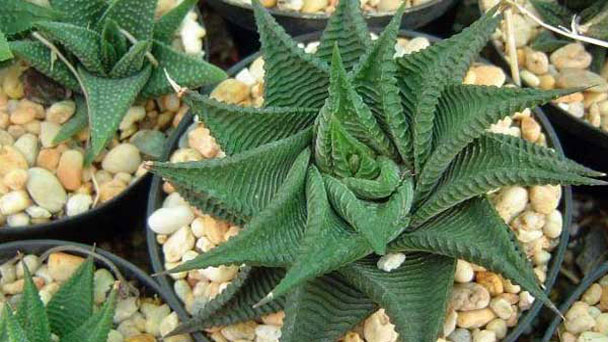
Haworthia Limifolia, also known as fairy washboard, is a striking succulent that can be up to 4 inches (10 centimeters) in diameter. Haworthia Limifolia has a rosette of triangular leaves with distinct ridges. Haworthia Limifolia's distinctive ridges resemble the texture of a washboard. Species of Haworthia Limifolia have light green to dark green leaves. The leaves of Haworthia Limifolia also tend to have a slight curve that produces a spiral effect when viewed from above.
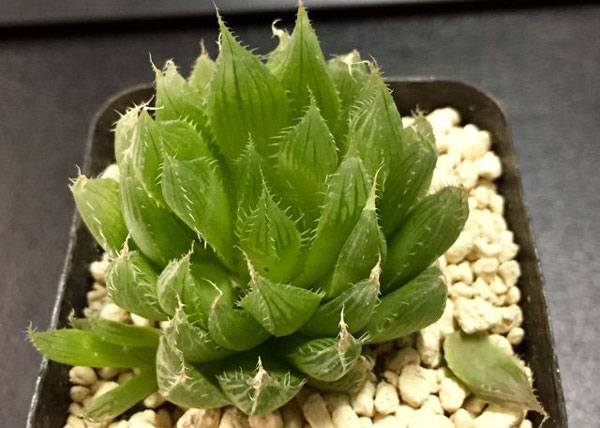
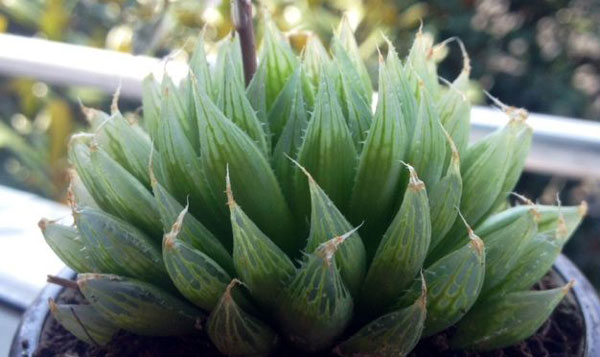
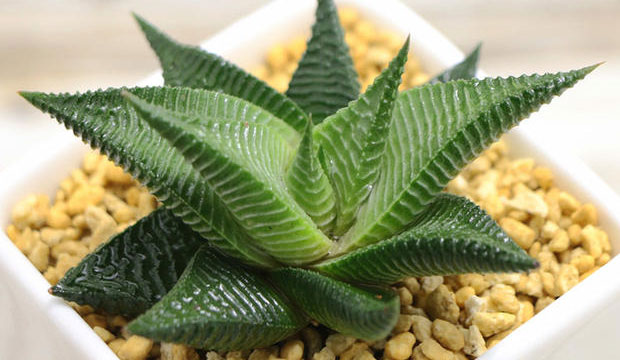
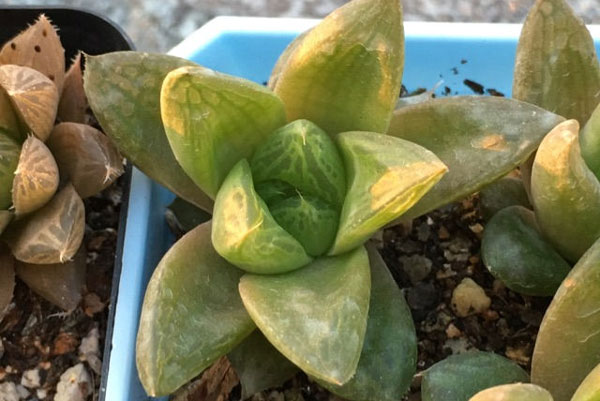
To avoid these, you must take precautions against the following:
Haworthia Limifolia succulent plants are perfectly capable of contracting various diseases. The most common type is leaf rot which affects the leaves and stems, causing them to turn brown or even black sometimes. To prevent this from happening, you should water your Haworthia Limifolia in a way that keeps its roots dry as much as possible during nighttime hours when humidity is higHaworthia. It’s also important not to overwater Haworthia Limifolia succulents since they have such shallow roots. This will help keep it away from fungal spores, which cause many types of plant disease, including leaf rot.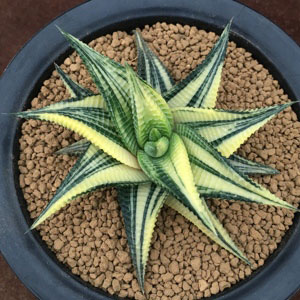
Haworthia margaritifera has warty white projections on the leaves.
Haworthia fasciata features horizontal white stripes and is sometimes called the zebra Haworthia.
Haworthia bolusii has "tufted" edges to the leaves.
Haworthia attenuata features long pointed green leaves.
Where to Grow Haworthia LimifoliaHow to Grow Haworthia LimifoliaHaworthia Limifolia Propagation with SeedsHaworthia Limifolia Propagation with Stem CuttingsHaworthia Limifolia Propagation with OffsetsHow to Care for Haworthia Limifolia (Fairy Washboard)Haworthia Limifolia Light CareHaworthia Limifolia Soil CareHaworthia Limifolia WateringHaworthia Limifolia Temperature & Humidity CareHaworthia Limifolia Fertilizer CareHaworthia Limifolia Pruning CareHaworthia Limifolia Pests & Diseases CareHaworthia Limifolia Potting & RepottingVarieties of Haworthia Limifolia Haworthia Limifolia Care FAQWhy is my Haworthia Limifolia going limp?Why are the Haworthia Limifolia leaves turning red?Is the Haworthia Limifolia Toxic?How big can Haworthia Limifolia grow?
Where to Grow Haworthia Limifolia
Haworthia limifolia ‘Fairy Washboard’ succulents need strong light. When planting this succulent type in a garden, make sure it gets sunlight. Full to partial sun is the best for its growth. Haworthia Limifolia is better to grow outdoor rather than indoor. Haworthia Limifolia prefers a warm climate. Haworthia Limifolia can survive at zone 10a-11b which is around -1.1 °C (30 °F). If you live in a cold area, it is better to plant fairy washboard in an indoor environment. As long as it gets enough sunlight, the Haworthia Limifolia will grow happily. When selecting what pot to use be sure that you understand the difference between the material used.
How to Grow Haworthia Limifolia
Haworthia Limifolia Propagation with Seeds
Haworthia Limifolia (Fairy Washboard) type is a slow grower so even if it can be propagated by its seeds, this method is not recommended. To propagate haworthia Limifoliafrom the seeds, plant the seeds in a well-draining soil mixture. This method can be used outdoors. In cooler areas, indoor propagating is recommended.Haworthia Limifolia Propagation with Stem Cuttings
When propagating haworthia limifolia from cuttings, cut a leaf from the mother plant carefully with a clean knife or scissors. Before replanting, wait for a few days to allow it to callous. Use well-draining soil for your new Haworthia Limifolia plant. Don't forget to water when the soil dries out.Haworthia Limifolia Propagation with Offsets
Haworthia Limifolia can be propagated at repotting time using offsets from the mother plant when it becomes crowded. When taking Haworthia Limifolia's offsets, use a sharp knife or secateurs and cut as close to the mother stem as possible to including as many roots as possible, then allow the offset to dry briefly before re-potting it (similar to cuttings from other succulents). Pot the offsets in a small pot, using the same soil as the mother plant, put the Haworthia Limifolia in a warm, bright spot, and make sure to adequately water.
How to Care for Haworthia Limifolia (Fairy Washboard)
Haworthia Limifolia Light Care
Bright, filtered light and ample airflow are recommended. The lack of sunlight can cause Haworthia Limifolia to etiolate and lose their vibrant colors. Newly acquired tender plants or plants that have been grown indoors need to be gradually introduced to sunlight to avoid fatal sunburn.Haworthia Limifolia Soil Care
Haworthia Limifolia plants need well-drained soil and can not stand waterlogged soils. Some commonly recommended options are a cactus mix or a succulent soil mix. Also a good potting mix for Haworthia Limifolia (Fairy Washboard) is made up of one part sand, one part peat moss, and half parts perlite or vermiculite. If you are planting a plant in a container, make sure it has drainage holes in the bottom. This way, water can drain, and the plant doesn’t get too wet. In general, Haworthia Limifolia plants prefer a soil that doesn’t contain too many nutrients. This is because Haworthia Limifolia store their water in thick leaves rather than storing it as sap as other succulent plants do. The less they have to work for the moisture, the better off they are over time. Haworthia Limifolia also need sandy soils so that there’s plenty of airflow and drainage for them to grow well without getting root rot or killed by mildew.Haworthia Limifolia Watering
Haworthia Limifolia needs to be watered when their soil is completely dried out and their leaves start to curl (about every two to three weeks). In the winter, Haworthia Limifolia need less water, so you can basically forget about them and just water them every other mont HaworthiaHaworthia Limifolia Temperature & Humidity Care
Haworthia Limifolia like warmer temperatures in the summer but cool in the winter (down to 10°C). Haworthia Limifolia doesn’t need any humidity. Haworthia Limifolia requires good ventilation, especially at night when they take in carbon dioxide for photosynthesis. Use a fan to keep air circulating so your Haworthia Limifolia can breathe.
Haworthia Limifolia Fertilizer Care
Feed sparingly with a weak fertilizer solution to promote plant growth. You can use an all-purpose fertilizer diluted to 50% of the recommended dose to feed your Haworthia Limifolia once at the beginning of the growing season (in the spring or fall).Haworthia Limifolia Pruning Care
Pruning Haworthia Limifolia (Fairy Washboard) is not a common practice. This plant can be kept compact by pinching off the terminal growth before it becomes too leggy. The Haworthia Limifolia will grow more slowly but retain its shape in this way. To encourage denser foliage, cut an inch or so of top growth periodically to maintain at least two sets of leaves on each stem. Lighter-colored plants with showier markings are often pruned for general interest and ease of handling. Haworthia Limifolia with dark green leaves tend to be left alone because they don’t get as spindly with age. They show less tendency to become overly long and spindly when you cut them. In any case, Haworthia Limifolia should never be cut back by more than one-third of the entire plant, or growth will become stunted. Pruning Haworthia Limifolia that has not been noticeably pruned for a few years is generally recommended. It can take up to three years before any new branches begin to show from old cuts.
Haworthia Limifolia Pests & Diseases Care
The haworthia Limifolia succulent can be prone to pests and diseases.To avoid these, you must take precautions against the following:
- Mealybugs
- Scale Insects
- Whiteflies
Haworthia Limifolia succulent plants are perfectly capable of contracting various diseases. The most common type is leaf rot which affects the leaves and stems, causing them to turn brown or even black sometimes. To prevent this from happening, you should water your Haworthia Limifolia in a way that keeps its roots dry as much as possible during nighttime hours when humidity is higHaworthia. It’s also important not to overwater Haworthia Limifolia succulents since they have such shallow roots. This will help keep it away from fungal spores, which cause many types of plant disease, including leaf rot.
Haworthia Limifolia Potting & Repotting
Haworthia Limifolia (Fairy Washboard) are small (usually remaining between 3 inches and 5 inches in height) and relatively slow-growing. Haworthia Limifolia are often grown in small clusters in wide, shallow dishes. Over time, Haworthia Limifolia’s clusters will naturally enlarge as the mother plant sends off small plantlets. When the cluster has outgrown its dish, repot in the spring or early summer into a new wide and shallow dish with fresh potting soil. This is also the time to take offsets for propagation.
Varieties of Haworthia Limifolia
There are more than 100 species of Haworthia, but their classification can be complex. The main difference among the common species is the size of the leaves and the orientation of the white markings on the leaves. In general, the best advice is to buy the most attractive variety to you based on leaf form and markings, as they all have similar cultural requirements. Some popular species include:Haworthia margaritifera has warty white projections on the leaves.
Haworthia fasciata features horizontal white stripes and is sometimes called the zebra Haworthia.
Haworthia bolusii has "tufted" edges to the leaves.
Haworthia attenuata features long pointed green leaves.
Haworthia Limifolia Care FAQ
Why is my Haworthia Limifolia going limp?
Haworthias belong to the succulent family and love dry soil. Limp and mushy leaves are a classic sign of root rot due to waterlogged soil. Let the soil dry out completely between waterings.Why are the Haworthia Limifolia leaves turning red?
Haworthia Limifolia’ leaves going red are a sign of stress due to too much light. Move it to a spot with indirect light to reverse the colouring.Is the Haworthia Limifolia Toxic?
Haworthia Limifolia plants are not toxic to humans or pets. However, Haworthia Limifolia plants do have a sap that can irritate the skin, so it is recommended to wear gloves when handling this plant.How big can Haworthia Limifolia grow?
Haworthia Limifolia is a rather compact and small succulent that rarely grows more than 5 cm tall and 10 cm wide. The size is what makes this plant ideal for windowsills and office desks, very charming in small, decorative pots.Latest Updated
- Benefits of Bugleweed - 7 Science-backed Health Benefits
- Bugleweed Dangers & Side Effects - Is It Poisonous?
- How to Plant Evergreen Trees - What You Should Know
- When to Plant Evergreens - Grow Guide for Evergreen Trees
- 12 Wonderful Evergreen Shrubs for Your Garden
- 12 Popular Evergreen Plants with Pictures for Beginners
- When And How To Prune A Lilac Bush Like a Pro
- How to Grow & Care for Lilac Vine (Hardenbergia Violacea)
- Japanese Lilac Tree (Syringa Reticulata) Care & Propagation Guide
- Shumard Oak Pros and Cons - What to Know
Popular Articles
- Winter maintenance of Antirrhinum Majus
- How to Grow Terminalia Mantaly Tree
- How to Grow and Care for Crossostephium Chinense
- How to grow Antirrhinum Majus in spring
- Peristeria Elata (Dove Orchid) Profile: Info & Care Guide
- Underwatered Snake Plant (Sansevieria Trifasciata) - Signs And How To Fix
- How to Care for Brazilian Jasmine Plant (Mandevilla Sanderi)
- How to Grow & Care for Graptopetalum Purple Delight in Summer
- Rosa Chinensis (China Rose): Plant Growing & Care Tips
- How to Care for Baby Sun Rose (Aptenia Cordifolia)